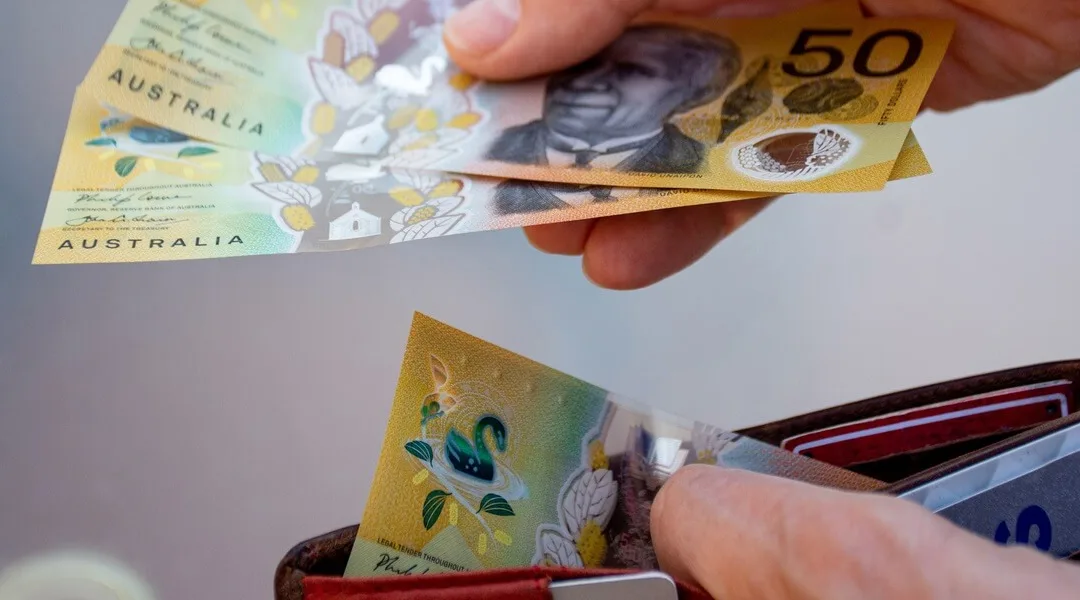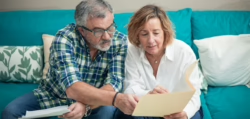
Here’s what Bob, Ibrahim and Monica found out
There are many ways of saving for your retirement. You can pay off your home, put money into super, an investment property or managed funds. Perhaps invest in art, cars or fine wine. I’m not a big fan of those last three, unless you have real expertise in the field, but some people do it.
There are pros and cons to each of these and many people combine them to help ensure a financially secure retirement. Owning your own home and having money in super is a really good combination as both have tax advantages.
But what happens if you decide to put all your savings effort into just one of these? Centrelink will treat you very differently and could give you a different Age Pension entitlement. Here’s how it can work.
Three lifelong friends, Bob, Ibrahim and Monica have turned 67 and are applying for the Age Pension. Each of them has done some planning for their retirement and have chosen different approaches.
Bob is a former builder and believes in property. His strategy was to pay off his home and he now has a $500,000 home, and no debt.
Ibrahim worked in tourism and moved around a lot. He has always rented and loved the flexibility his job gave him to live in many different places. He built up a good super balance over his career and now has $500,000 in an Account-Based Pension (ABP).
Monica is an artist. She didn’t earn while working but had a good eye for art. She now has an art collection worth $500,000. She plans to gradually sell the art to help meet her expenses.
Now Bob, Ibrahim and Monica all have a net worth of $500,000. But they will receive very different Age Pension entitlements. For the sake of this example we will assume they are all single so will be assessed using the singles’ thresholds, and they don’t have any other assets. Here is what they will get.
Bob.
Bob’s home is exempt from the assets test. Bob will receive the full Age Pension of $30,646 per year.
Monica.
Monica doesn’t have a home as an exempt asset. So all her $500,000 artwork will be assessed under the assets test. She is just below the minimum asset threshold for single non homeowners, which is $579,500. She will also receive the full Age Pension of $30,646 but will have higher outgoings than Bob as she is paying rent. She will receive rent assistance which will help a little but falls a long way short of the actual cost of renting. She had better start selling that art quickly!
Ibrahim.
Ibrahim is in a similar situation to Monica. Their assessable assets are exactly the same So you would expect he would get the same amount of Age Pension. But no, Ibrahim has his retirement nest egg in a financial asset. Under the assets test he will receive the same as Monica. But his assets are also going to be assessed under the income test as he will have deemed income on his assets. His deemed income is as follows:
0.75% on the first $64,200 = $481.50
2.75% on the remaining $435,800 = $11,984.50
His total deemed income is $12,466. Ibrahim will now be assessed under the income test instead of the asset test and only receive $27,247. That is about $3,399 less that both Monica and Bob receive. Ibrahim doesn’t actually get to enjoy the full asset threshold because of a decision to invest in an income-producing asset rather than his home or personal assets such as art or cars.
| Bob | Monica | Ibrahim | |
| Home value | $500,000 | $0 | $0 |
| Non deemable assets | $0 | $500,000 | $0 |
| Financial (deemable) assets | $0 | $0 | $500,000 |
| Total assets | $500,000 | $500,000 | $500,000 |
| Age Pension entitlement | $30,646 | $30,646 | $27,247 |
Does the government really want to send a message that people should invest more in art, jewelry, wine or cars rather than super to get more Age Pension? It’s not a terrific idea as it’s hard to turn those assets into income when you need it.
One way to fix this would be to exempt assets from deeming within the lower asset threshold. If that was the case Bob, Ibrahim and Monica, all with the same net worth, would all receive the same amount of Age Pension. Now I’m not suggesting Ibrahim would be better off without his Account Based Pension (ABP) and investing in art. We have written previously about the terrific tax benefits of ABPs and Ibrahim will enjoy an ongoing income stream from this investment. I’m just pointing out a weird anomaly in the way Centrelink assesses assets. To better understand the benefits of an Account-Based Pension you can speak with one of our advisers.
You can check all this for yourself on our free Age Pension Eligibility Calculator. And our advisers can help you think about your mix of assets and how best to use them to maximise your entitlements. So what do you think? Do you agree the thresholds can create anomalies? Can you think of other examples? Perhaps you think that the current system is working perfectly. We would love to know your views.






get rid of income and asset tests
have a universal pension
save millions by loosing centre link staff.
end nightmare of endless requests for info they have previously been sent.
Netherlands – The AOW (Algemene Ouderdomswet) gives every resident (and people who’ve lived/worked in NL) a flat pension based on years of residence, not income or wealth.
• New Zealand – NZ Superannuation is a universal pension for residents over 65 who’ve lived in NZ for at least 10 years (with 5 after age 50). No means testing, though it is taxable.
I agree! It’s a pain having to regularly updated your assets and income, especially when you receive a notice to do so, you are usually only given a short time frame otherwise you are threatened with having your pension stopped!
Exactly, and don’t allow federal govt to say they can’t afford it – they issue our currency and can decide where to spend the money. Nobody else has to ‘lose out’ for better pensions.
Like Barbara’s comment NZ has a universal pension with none of the admin overheads and stupidity of ours. Who cares if a few millionaires get it as long as the people who need it get it without duress. I dreaded having to deal with Centrelink, largely due to Robodebt. I find the process totally opaque and frustrating. ALSO every payment should come with a statement of income, assets and the calculation of the payment. If they want a complex system they should be prepared to document it to us.
your numbers are all over the shop. don’t add up.
Hi Anthony, thank you for raising your concern. We’ve gone back through the article and the math has been displayed correctly. If you can elaborate and the supposed error we’ll be happy to review it further.
Your excellent article shows so clearly how unnecessarily complicated and arbitrary the Australian system is. The two previous commenters have hit the nail on the head. It would not be too difficult to simplify the system. Plenty of precedents in other countries for us to model a new fairer, easier and less costly system on.
Agree with both of you 100%
I was under the impression that Account based pension assets were calculated at 60% of their value – not 100% as in your article. Which would bring Ibraham’s assets down to $300,000 of accessable assets. Could you please expand on this as I am intending to use the APB when I sell my home and downsize to one with less value. Thank you
Hi Claire, there are some “income streams” that can be assessed differently however account-based pensions are assessed at 100% as per the article. To clarify your options and the pros/cons of each I recommend having a consultation with one of our advisers who can clarify which income streams are assessed which way so you can decide the best option for you. TO make a booking click here.
Your article should really note that Ibrahim will earn interest on his ABP, of the order of, perhaps 8%, or $40,000 per year- only $5,000 of which would have to be drawn down p.a.. This makes up a lot more than the age pension lost.
Re: pensions in some other countries. None of these countries have anything like our superannuation system and the very generous tax breaks built into it. Some countries have a contributory system whilst others use taxation to pay for these. Some also pay tax on their pensions. I suspect that working Australians would not want to pay more tax to subsidise boomers such as myself and the folks mentioned.
Thanks for the suggestion Gary. We were trying to keep it simple to illustrate how deeming works and the types of assets it applies to but appreciate the feedback for next time!
As Gary implied earlier, your example goes to prove that how assets are held should definitely be assessed differently. Ibrahim has his own income and needs the pension less. Monica has assets that she can use to help support herself in excess of her pension. Both also receive Rent Assistance although not enough to cover this expense. Perhaps it is time to give non-homeowners a higher asset threshold to increase it in line with the value of homes owned.
Government should lift taxation thresholds, wind back the Coalition’s punitive assets test and pay a pension which meets the needs of older Australians. Government also needs to force financial institutions to pay a reasonable amount of interest on cash accounts. Government and corporate sector both need to stop bullying and abusing older people who don’t want to buy things online, bank online, do anything of a financial nature online. I think most people are sick of the lying, delaying and cheating that occurs on a regular basis. We also need far reaching laws on Elder Abuse by government, corporate sector, neighbours, relatives, trades people and anyone else who feels like giving it a go. Superfunds should be forced to send monthly paper statements to older people who are in receipt of Centrelink or DVA pensions. Cash and cheques should not be taken away, and councils need to go back to printing public transport timetables.
get rid of income and asset tests
have a universal pension
save millions by loosing centre link staff.
end nightmare of endless requests for info they have previously been sent. The present system is a nightmare. Everyones situation is different. If you are concerned with the tall poppy syndrum make the pension taxable and adjust the tax system to reclaim the pension from the wealthy. eg if your taxable income exceeds a level of say $80,000 then you would pay extra tax to recover the overpayment of pension on a sliding scale. I have to report fortnightly my spouses income. Every time interest rates change up goes the value of my rental. I support one of my sons with a low rent and lose about $4000 annually. This familly of four could not afford average rents. If I sold the rental this familly of four would be on the street. Currently I recieve a pension payment of $100 a week. When I die my wife will receive nothing. The rental and her super will make her inelligible for the pension. I am 78 years of age. Her super will render her inelligible for a pension when she reaches 67. The rental asset cannot be sold. What happens when her super runs out and the asset is worth in the eyes of centrelink more than the upper asset limit.
I am helping to solve the housing problem for a familly of four. No justice in our pension system.